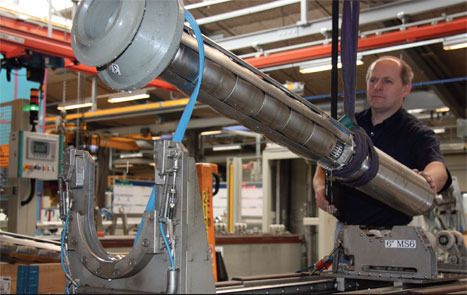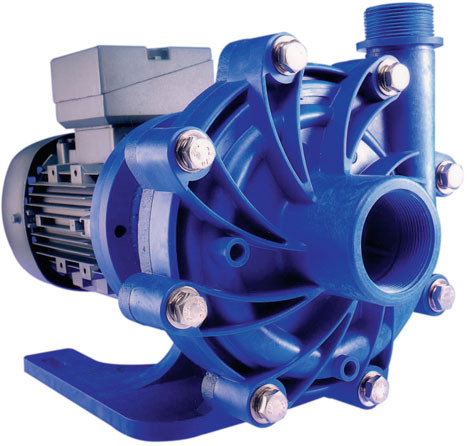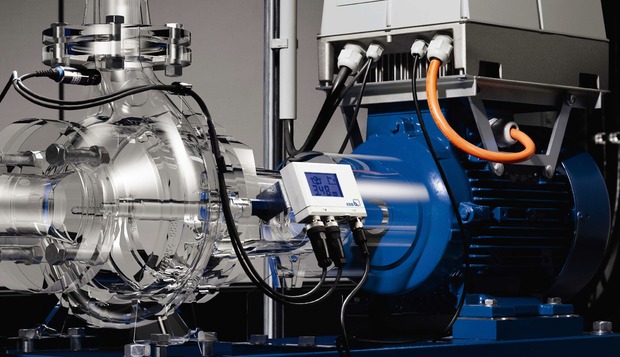Energy savings: Future trends in pumps
19 Nov 2012
Pumps are generally considered to consume around 25 % of the electricity which is produced worldwide, and the process industry accounts for a quarter of that total.
Energy-saving measures on pumps most commonly target individual items of equipment. However, optimising at the system level - though more challenging - can deliver far higher energy savings. Very well engineered pumps and optimal configuration of the hydraulic system, for instance, often offers the best way to improve energy efficiency.
It is also worth noting that most pump systems currently in operation are equipped with centrifugal pumps - a report from Dechema organisers of the ACHEMA trade fair quoting estimates of around 73 % and even as high as 85 % to 90 % in specific industries such as chemicals.
Working close to the optimal pump operating point, hydraulically correct pipe dimensioning - are also essential, as is the use of efficient motors, frequency converters for speed control, hydraulics designed for optimum efficiency, reduction of losses in the coils and bearings.
But, as a spokesman for pumps maker Wilo UK Ltd comments, “There are literally millions elderly, inefficient pumps still operating across the UK and Europe. These should be replaced by high-efficiency pump designs, particularly those that combine advanced hydraulics with highly efficient drive concepts.
Typical of the savings are the figures cited by Brammer for one application involving a pump being driven by a 21kW motor operating at 90% demand and costing £12,532 per year to run. The introduction of a VSD reduced the annual energy consumption by more than £3,000.
Dechema, meanwhile, notes that variable speed drives not only save energy and money. They also provide interactive capability: pumps with sensors and microelectronics become actuators which can “intervene” and affect the process flow.
Compared to mechanical control with butterfly valves, for instance, e-pumps adjust the flow rate to match actual demand much faster and with greater precision in response to demand fluctuations.
Impeller modification is another method which can be used to adapt centrifugal pumps to the specific application and reduce pump energy consumption. Reduction of pump and motor power ratings can cut energy consumption by between 10% and 40%.
Ongoing maintenance can also reduce energy consumption, because wear and aging reduce the efficiency of all types of equipment. Likewise, corrosion and deposits increase flow resistance in pipe networks, while leakage in valves and fittings causes pressure losses in the system.
A study conducted by the FfE Research Center for Energy Economics indicates that the energy efficiency of poorly maintained pumps can decrease by as much as 15%, the Dechema report notes.
Supplier offer services for routine measurement and monitoring of pump energy efficiency, which can guide improvements and deliver major efficiencies. The approach typically includes establishing a database with details of all the pumps involved, and can work in parallel with a condition monitoring programme.
SKF, for example, recently reported how a customer in the pulp & paper industry achieved an energy improvement potential of 70% at one plant by monitoring only eight out of their 300 pumps. Through monitoring and optimising efficiency of the eight pumps, the factory could reduce its annual electricity demand by up to 2,500MWh, corresponding to 1% of the factory total electricity use.
Another challenge concerns the selection and maintenance of drive systems for pumps and valves.
The importance of getting this decision right is brought home clearly by figures showing that in the UK, electric motors and drives account for more than two thirds of power consumption in industry, says Brammer.
Yet many motors are unnecessarily oversized for the machines they drive. The annual energy consumption cost of running a motor can be up to ten times its purchase cost. A 10kW motor operating at 87% efficiency could cost £1,500 more over its lifetime than one that is just 5% more efficient.
Even with all the above measures in place, optimum energy efficiency can still as the actual operating point is not displayed on the pump. Operators, instead, rely on pressure gauges that measure static pressure but not the dynamic pressure component, so that the pump cannot be run in the most efficient way.
The problem has led pump maker KSB to develop a monitoring unit, called PumpMeter, which comprises pressure sensors and an analysing display unit which is fitted to the pump.
Two sensors in the pump measure the pressure values on the suction and discharge sides and using this data. The device computes the differential pressure and determines the current operating point, which is displayed and continuously updated in real time.
The discharge-side sensor measures the pressure with a sampling frequency in the kilohertz range. The result is used to determine the vane passing frequency of the impeller.
The electronics analyse these minimum pulsations to determine the speed of the pump and the drive. This data is used to compute the motor slip and finally the motor torque and power input.
Even for very flat characteristic curves, the operator receives a very accurate estimate of the operating point based on the current pump input power, claims KSB. A load profile for the pump is recorded based on all the data compiled, providing information on the pump’s actual operating mode.
The display features a typical pump curve, sub-divided into four sections, illustrating in which range the pump is operating at a particular point of time. Operators can readily see if the pump is operating in an efficient and cost-saving manner. An energy efficiency symbol also lights up whenever significant energy savings can be made.









